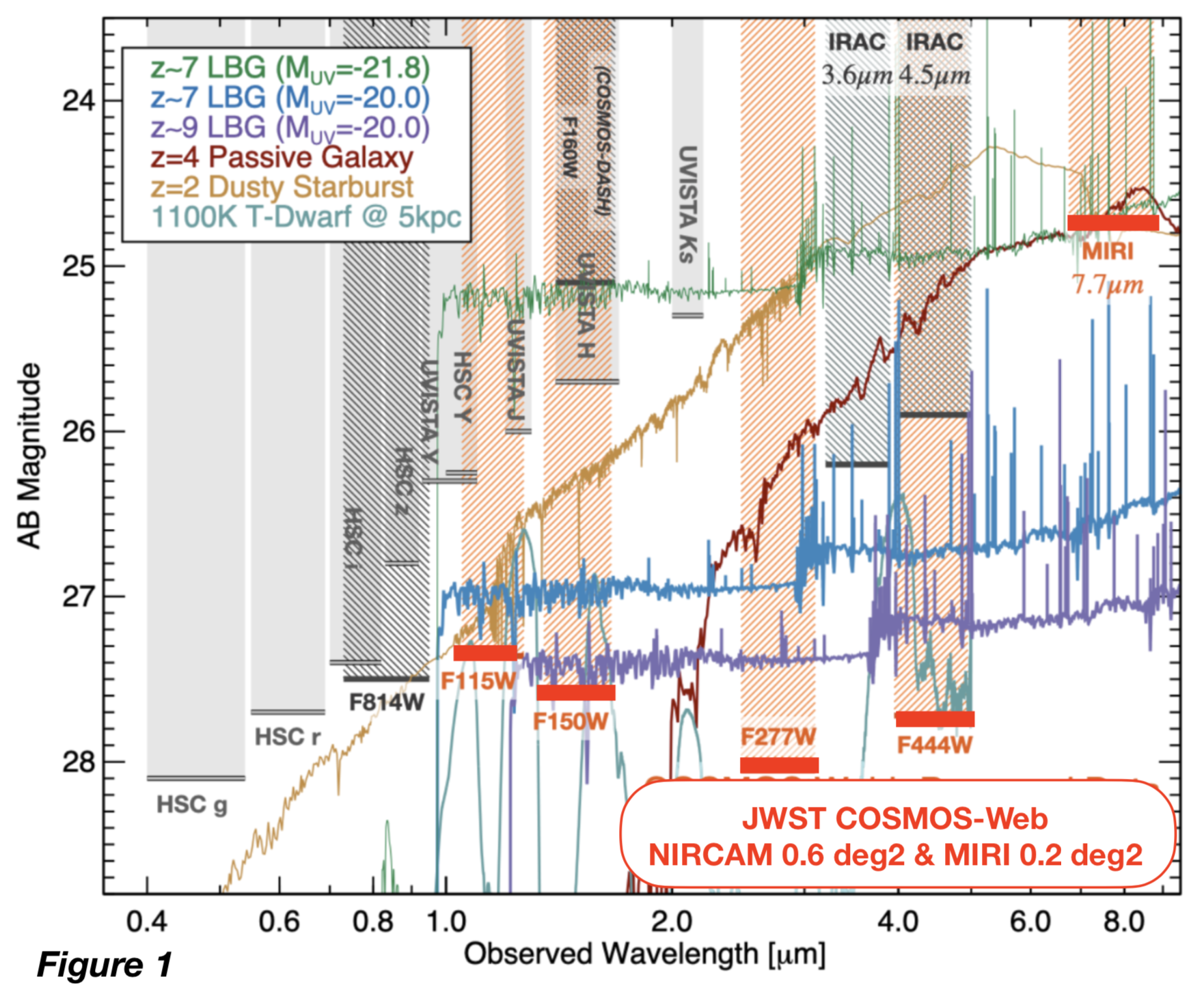iMAGE
Scientific project
Project funded by the ANR 2022-2026

Scientific context
The variety of their rapid transformations makes high-redshift massive galaxies an extraordinarily rich laboratory to discover the processes driving and regulating star formation and triggering morphological changes in all galaxies.
Goal
Our project brings together experts in acquiring and exploiting large observational datasets with a team specialized in numerical simulations. Our goal is to characterize the rise and fall of massive galaxies in the first 3 Gyrs of the Universe and to gain new insights on the physics governing both their mass assembly and morphological transformations. This project relies on the unprecedented JWST imaging of COSMOS-Web, combined with state-of-the art hydro-dynamical simulations and machine learning techniques. Thanks to this transversal approach, our project represents a unique opportunity to resolve the long-standing question of the origin of red elliptical galaxies and to unravel the physics of the most fascinating phases of galaxy evolution in the early Universe.
An exceptional dataset with JWST
COSMOS-Web (Kartaltepe+21) is a uniquely powerful survey for studying massive galaxies. It is a 207hr JWST GO Cycle 1 Large Program. This Treasury program will be performed in four NIRCam bands reaching magnitudes AB∼27–28 over 0.6 deg2 (λ= 1.1 – 5.6 μm, Fig.2) and parallel observations in MIRI at λ=7.7μm over 0.2 deg2. Being the largest survey planned with JWST (Fig.2, right), COSMOS-Web is ideally suited to acquire large samples of massive galaxies at high redshift, because of their lower number density. Several associated JWST programs provide deep NIRCam imaging on smaller areas. In particular, several members of our team are part of PRIMER which reaches AB∼29 in 9 bands over 400 arcmin2 (half on COSMOS). Data acquisition has started and all data should be taken by the end of 2023.
The synergy with simulations
Our team includes world-leading experts in hydrodynamical simulations of galaxy formation, including Yohan Dubois, PI of the Horizon-AGN and NewHorizon simulations, and Maxime Trebitch, PI of the Obelisk simulation. Our project aims to run and calibrate the subgrid physics of hydrodynamical simulations against high-redshift JWST observations, and in particular ensure that they are able to reproduce the extreme phases of galaxy evolution. A better understanding and implementation of the physics of these phases will allow us to produce an overall better description of galaxy populations as a whole.
A new approach to link galaxies along cosmic time
We propose to develop advanced tools to reconstruct individual star formation histories to fully exploit the information contained in galaxy multi-band colours from JWST data. The objective is to couple a non-parametric approach to describe the SFH and machine-learning techniques (as SOM or VAE). Our team includes statisticians and expert in machine learning. We will rely on the synergy between observations and simulations to develop such new methods.